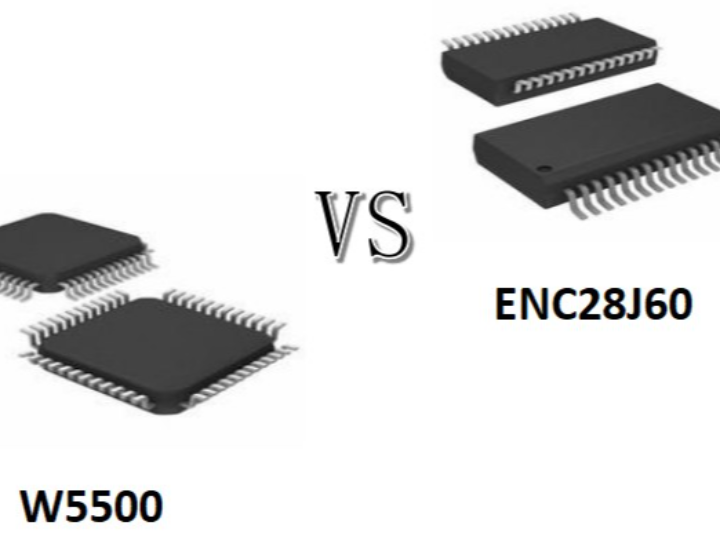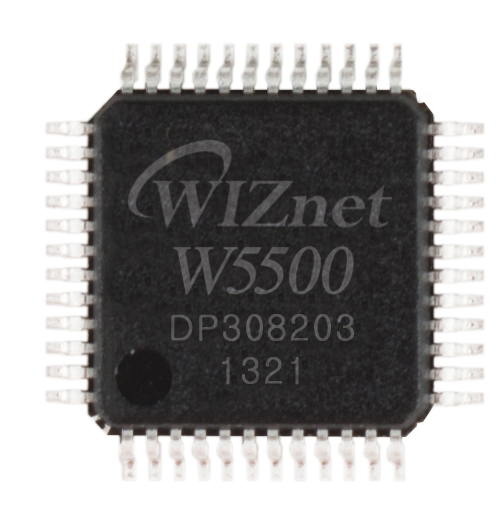W5500 vs. ENC28J60: The Ultimate Ethernet Controller Showdown
This content compares the W5500 to the ENC28J60.

In the world of embedded networking, choosing the right Ethernet controller is crucial for performance, efficiency, and ease of development. If you're working on an IoT project, industrial automation system, or any embedded network solution, you've likely come across two popular choices: W5500 and ENC28J60. But which one is better?
A great source of comparison between these two controllers can be found in the article on Utmel's website. The article provides an in-depth technical analysis, highlighting key differences. However, if you're looking for a more curated perspective that clearly outlines why W5500 is the superior choice, you're in the right place.
In this article, we'll break down the strengths and weaknesses of each controller, provide a clear comparison table, and help you make the right choice for your application. Plus, we'll answer some frequently asked questions at the end.
What Makes W5500 Stand Out?
🚀 1. Built-in TCP/IP Stack – Lower MCU Workload, Faster Performance
W5500 comes with a hardware-based TCP/IP stack, which means it can process networking protocols directly. This drastically reduces the burden on the microcontroller (MCU), resulting in faster and more efficient communication.
ENC28J60, on the other hand, lacks a built-in TCP/IP stack, requiring the MCU to handle all networking tasks via software. This significantly increases processing overhead and slows down network communication.
⚡ 2. 80MHz SPI Speed – 4x Faster than ENC28J60
Speed matters in networking. W5500 supports SPI speeds up to 80MHz, while ENC28J60 maxes out at just 20MHz. This fourfold difference means W5500 can transmit data much faster, reducing latency and improving overall network performance.
💾 3. 32KB Internal Buffer – Stable Data Transmission
W5500 includes a 32KB buffer memory, ensuring that large amounts of data can be handled smoothly. ENC28J60, in contrast, has only 8KB, making it more susceptible to data loss and transmission instability.
🔗 4. Supports Up to 8 Simultaneous Connections
W5500 allows up to 8 socket connections at the same time, making it ideal for applications that require multiple concurrent connections. ENC28J60 doesn’t support multiple sockets natively, making it less suitable for complex networking applications.
🔋 5. Lower Power Consumption – Ideal for IoT & Battery-Powered Devices
Power efficiency is key for IoT devices. W5500 is designed for low-power operation, making it ideal for energy-conscious applications. ENC28J60, on the other hand, consumes more power, which could be a dealbreaker for battery-powered systems.
🛠 6. Integrated PHY – Simplified Hardware Design
Both W5500 and ENC28J60 have an integrated Ethernet PHY. However, W5500's PHY is optimized for better power efficiency and performance, making it a more robust choice for industrial and IoT applications.
🔍 W5500 vs. ENC28J60: Side-by-Side Comparison
| Feature | W5500 🚀 (Superior Choice) | ENC28J60 ⚠️ (Budget Option) |
|---|---|---|
| TCP/IP Stack | ✅ Built-in (Reduces MCU load) | ❌ Software-based (High MCU load) |
| Max SPI Speed | ✅ 80MHz (Fast) | ❌ 20MHz (Slow) |
| Buffer Memory | ✅ 32KB | ❌ 8KB |
| Simultaneous Connections | ✅ 8 sockets | ❌ No native socket support |
| Power Consumption | ✅ Low power (IoT-friendly) | ❌ Higher power consumption |
| Ethernet PHY | ✅ Integrated, optimized for efficiency | ✅ Integrated |
| Auto-Negotiation (10/100Mbps) | ✅ Supported | ❌ Not supported |
| Best Use Cases | IoT, industrial automation, fast networking | Simple, low-cost Ethernet projects |
🧐 When Should You Choose W5500?
If your project requires high-speed data transmission, multiple simultaneous connections, and reliable performance, W5500 is the clear winner. It’s perfect for:
IoT devices requiring stable and energy-efficient networking
Industrial automation with high-speed Ethernet needs
Real-time applications where network performance is critical
Projects handling large data transmissions without MCU overload
📌 When Is ENC28J60 a Good Option?
ENC28J60 is a cheaper alternative that works for basic Ethernet applications where performance isn't the top priority. If you’re working on:
A low-cost project with minimal network traffic
DIY or hobbyist-level Ethernet projects
Simple devices that require only occasional Ethernet connectivity
Then ENC28J60 might still be a viable choice.
🛠 FAQs – Your Questions Answered!
❓ 1. Can I replace ENC28J60 with W5500 in my existing project?
✅ Yes, but keep in mind that W5500 has a different interface and requires modifications to your firmware. However, the performance improvement is well worth it.
❓ 2. Does W5500 require a specific microcontroller?
✅ No, W5500 communicates over SPI and works with a variety of microcontrollers, including Arduino, ESP32, and STM32.
❓ 3. Is W5500 suitable for battery-powered IoT devices?
✅ Absolutely! W5500 is optimized for low power consumption, making it a great choice for energy-efficient IoT applications.
❓ 4. What’s the biggest disadvantage of W5500?
⚠️ The only real downside is that it costs slightly more than ENC28J60. However, the performance benefits far outweigh the price difference.
❓ 5. Where can I buy W5500?
✅ W5500 modules are available from online retailers like Amazon, AliExpress, and major electronics suppliers like Mouser and DigiKey.
🔚 Final Thoughts: Why W5500 is the Best Choice
If you want fast, reliable, and efficient Ethernet connectivity in your embedded system, W5500 is hands-down the best choice. With its built-in TCP/IP stack, high-speed SPI, low power consumption, and optimized integrated PHY, it outperforms ENC28J60 in almost every aspect.
That said, ENC28J60 remains a budget-friendly option for simple applications. But if you're serious about performance, W5500 is the clear winner. 🚀

